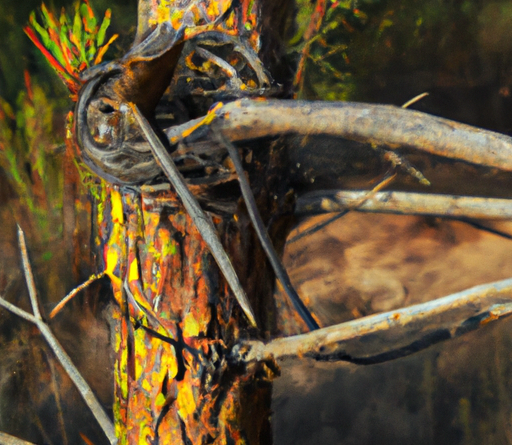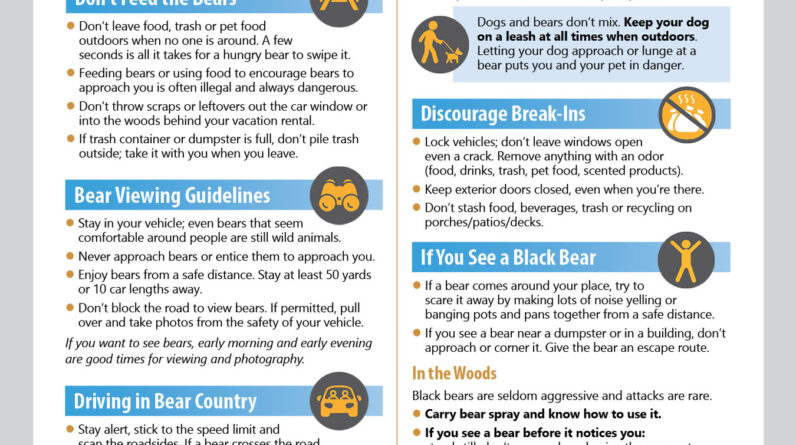
Introduction
Are you planning a hiking trip or spending time in bear country? It’s important to be well-prepared and educated about bear safety precautions. Understanding how to prevent bear encounters and effectively handle them if they do occur can significantly reduce the risk of harm to both you and the bears. In this article, we will discuss the importance of bear safety precautions and provide you with essential tips to stay safe in bear territory.
Understanding Bear Safety
Knowing how to avoid bear encounters is paramount. Familiarize yourself with the natural habitat and behavior of bears. Understand that bears are typically shy creatures and will avoid contact with humans if given the chance. However, accidental encounters can happen, particularly if you stumble upon a bear while hiking or camping.
Why Bear Safety Precautions are Important
Bear safety precautions are essential for both personal and wildlife conservation reasons. By taking proactive measures, you can reduce the likelihood of potentially dangerous encounters. These precautions also help protect bears by preventing habituation to human presence, reducing the need for their relocation or euthanasia.
Remember, the goal is to respect wildlife and keep both humans and bears safe. By implementing bear safety precautions, you can enjoy your outdoor activities with peace of mind, knowing that you are doing your part to protect both yourself and the bears. Always remember that prevention is better than cure when it comes to bear encounters.
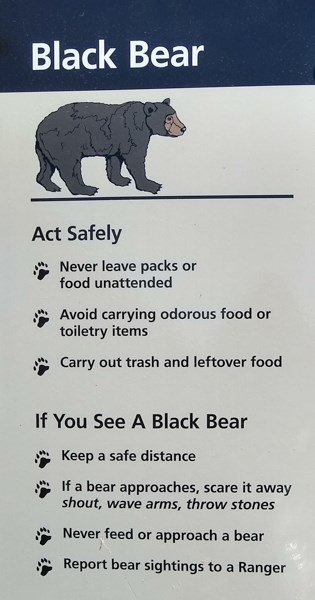
Bear Safety Precautions
When it comes to surviving a bear encounter, knowledge is key. By understanding bear behavior and knowing how to identify signs of their presence, you can greatly reduce the risk of an unpleasant encounter. Let’s explore some essential bear safety precautions together.
Know Your Bears
Different Types of Bears
There are several species of bears that you may come across in the wild. Grizzly bears and black bears are the most common in North America. While both can be dangerous if provoked, grizzly bears tend to be more aggressive in defending their territory or cubs. On the other hand, black bears are often less confrontational.
Bear Characteristics and Behavior
Understanding bear behavior is crucial for your safety. Generally, bears are solitary creatures, but they can become aggressive if they feel threatened or if a food source is disturbed. Bears have excellent hearing and a keen sense of smell, so loud noises and strong odors can attract their attention. It’s important to remember that bears are wild animals, and avoiding direct contact is always the safest option.
Identifying Bear Signs
Learning to recognize signs of bear activity is another essential precaution. Look for tracks, claw marks on trees, overturned rocks, or scat. These signs can indicate recent bear presence and help you avoid areas that are frequented by bears.
By being aware of the different types of bears, understanding their behavior, and recognizing signs of their presence, you can confidently navigate bear country and reduce the chances of a dangerous encounter. Stay informed and always prioritize your safety when venturing into bear habitat.
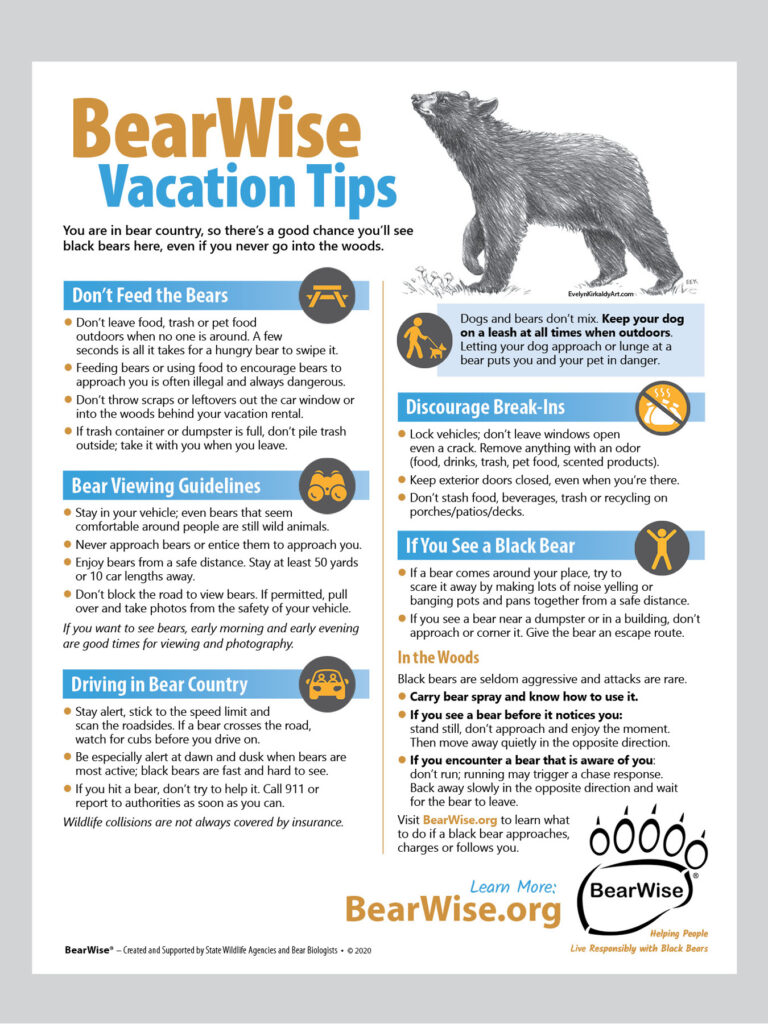
Researching Bear Habitats
Identifying Bear Habitats
When it comes to bear safety, knowledge is key. Before venturing into bear territory, it is crucial to research and understand bear habitats. Bears typically reside in areas with abundant food sources, such as forests and mountains. Take the time to familiarize yourself with the types of habitats bears are known to frequent in your region. By doing so, you’ll be able to better prepare yourself for potential encounters.
Understanding Bear Territory
Bears, like humans, have their own territories. These territories are a bear’s home range, where it goes about its daily activities. It is important to recognize and respect these territories to minimize the risk of a bear encounter. Keep in mind that if you encroach upon a bear’s territory, it may perceive you as a threat and react defensively. Stay alert and be aware of your surroundings to avoid unintentionally stumbling into a bear’s territory.
Knowing High-Risk Areas
Certain areas are more prone to bear encounters than others. These high-risk areas can include camping spots near water sources, berry patches, or popular hiking trails. Familiarize yourself with any reported bear sightings in these areas and adjust your plans accordingly. While it’s impossible to predict a bear’s exact location, avoiding high-risk areas can greatly reduce your chances of a bear encounter.
By researching bear habitats, understanding bear territories, and knowing high-risk areas, you can better prepare yourself for a potential bear encounter and help ensure your safety in bear country. Stay informed, stay aware, and always be prepared.
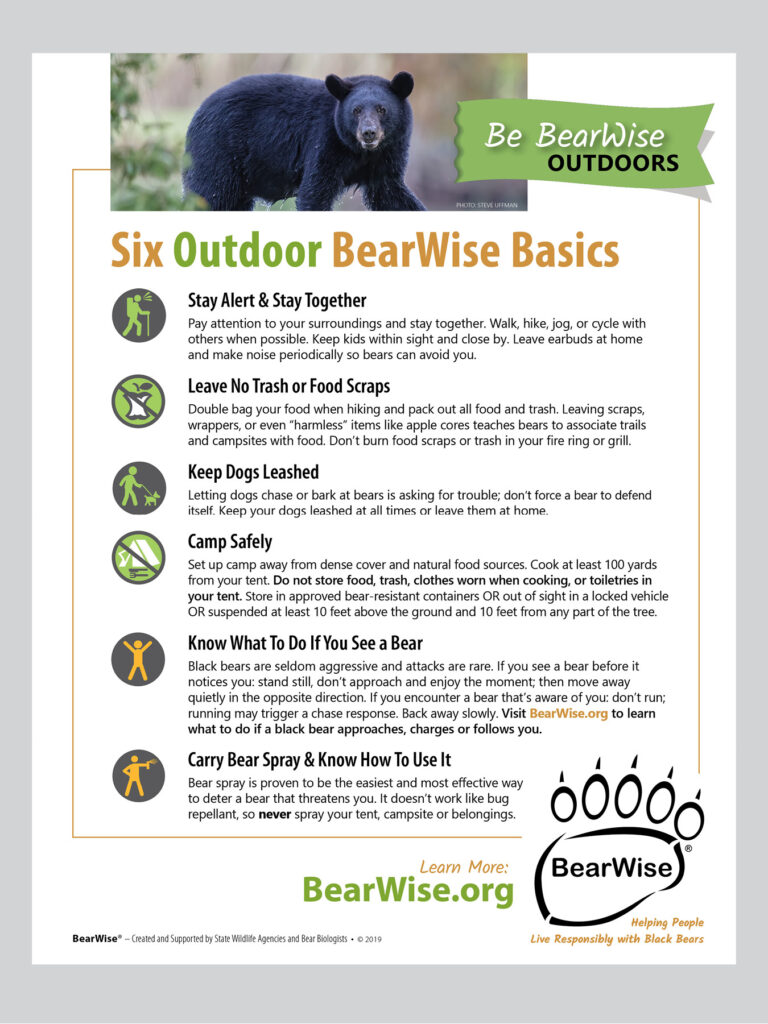
Bear Safety Equipment
When venturing into bear country, it’s crucial to be prepared with the right safety equipment. By taking appropriate precautions, you can greatly reduce your risk of a dangerous encounter. In this section, we will discuss the essential bear safety gear you should have, including bear spray and bear bells.
Essential Bear Safety Gear
Bear Spray is an indispensable tool when it comes to protecting yourself in bear country. It is a specially formulated pepper spray designed to deter aggressive bears. When selecting bear spray, look for one with a high concentration of capsaicin, the active ingredient. Ensure it is easily accessible and practice deploying it before hitting the trail. Remember, bear spray should never replace basic safety practices like making noise and being aware of your surroundings.
Bear Bells are another vital piece of bear safety equipment. These small bells emit a constant jingling sound while you hike, alerting bears to your presence and giving them ample time to avoid you. Attach them to your backpack or clothing, ensuring they are securely fastened and make enough noise to be effective. However, bear bells should not be seen as a foolproof deterrent, so it’s crucial to remain vigilant and follow additional safety measures.
Following these guidelines for bear safety equipment will significantly enhance your safety while exploring bear country. Stay prepared, stay alert, and stay safe!
Bear Encounters: Prevention
When exploring the great outdoors, encountering a bear can be a thrilling yet potentially dangerous experience. To ensure your safety and prevent any untoward incidents, it is essential to be aware of some practical bear safety precautions. By following these simple guidelines, you can significantly reduce the risk of encountering a bear and ensure a safe and enjoyable outdoor adventure.
Making Noise while Hiking
One effective way to prevent surprising a bear is by making noise while hiking. Bears typically avoid human contact, so making your presence known will allow them to move away. Chatting, singing, or wearing a bear bell are effective techniques to alert a bear of your presence. Stay vigilant and be especially noisy in areas with limited visibility, such as dense forests or around corners.
Traveling in Groups
When venturing into bear country, it is advisable to travel in groups of three or more people. Bears are less likely to approach larger groups as they perceive them to be a potential threat. Stick together and make sure everyone in your group is aware of bear safety practices. Remember, there is strength in numbers.
Storing Food Properly
Food odors can attract bears, so storing your food properly is vital. Keep all food, cooking utensils, and scented items secure in bear-resistant containers or use bear hangs to suspend them from trees. This precaution will prevent bears from being lured by tempting smells and reduce the chances of them wandering into your campsite.
By implementing these bear safety precautions, you can greatly minimize the risk of bear encounters and ensure a safe and enjoyable outdoor experience. Stay vigilant, be prepared, and always respect the wildlife you encounter in their natural habitat.
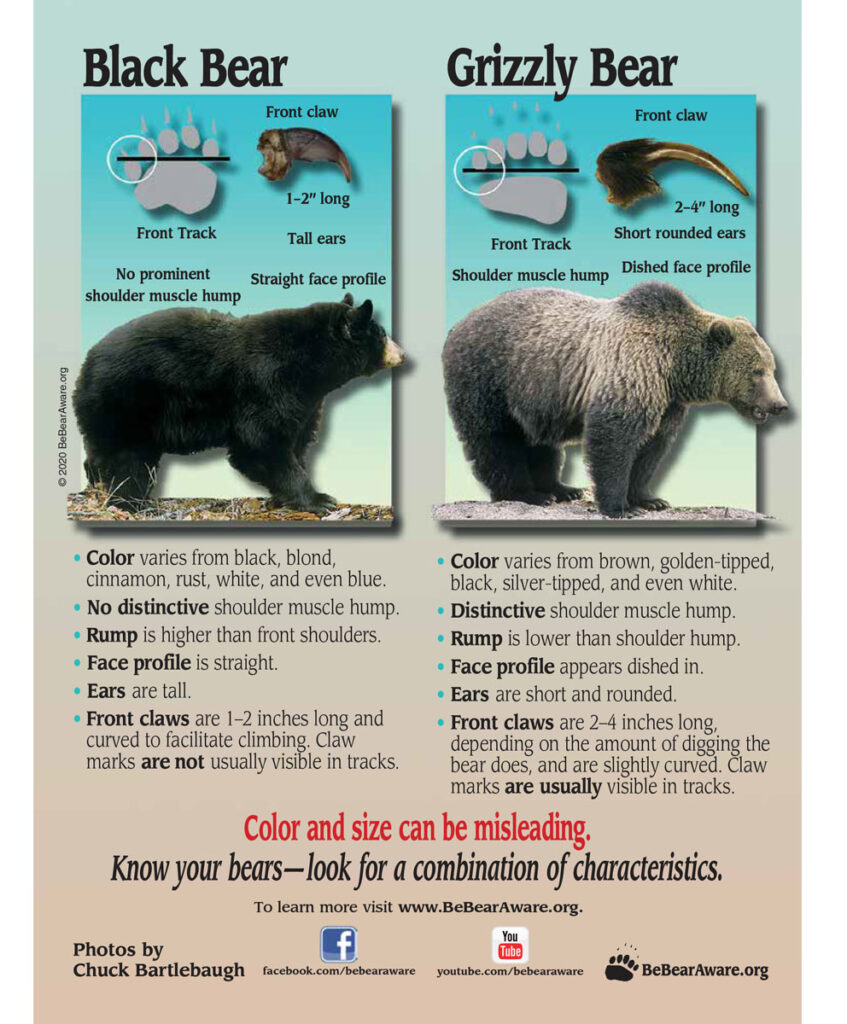
Bear Encounters: Reacting
Encountering a bear in the wild can be unnerving, but knowing how to react can make all the difference. Your safety should always be your top priority, and understanding bear behavior and following some key precautions can greatly reduce the risk.
Remaining Calm and Assessing the Situation
When you come face-to-face with a bear, it’s crucial to stay calm. Bears have keen senses, and sudden movements or loud noises may provoke them. Slowly back away while maintaining eye contact with the bear, giving it a clear escape route. If the bear stands on its hind legs, it is not necessarily being aggressive but is rather trying to get a better view of you. Remain still and continue to speak calmly.
Determining Whether it’s a Defensive or Predatory Attack
Differentiating between a defensive and predatory bear attack is vital. Defensive attacks usually occur when a bear feels threatened, while predatory attacks involve a bear hunting you as prey. Defensive bears may display a variety of warning signs, such as vocalizing, stomping, or bluff charging. Predatory bears are generally silent, stealthy, and determined in their approach.
Using Bear Spray and Playing Dead
Bear spray can be a helpful deterrent in defending yourself against a bear. Ensure it is easily accessible and practice using it beforehand. If a bear charges or makes physical contact during a defensive attack, use your bear spray and aim for its face. In the rare event of a predatory attack, playing dead may increase your chances of survival. Lie flat on your stomach with your hands clasped behind your neck, and spread your legs to make it harder for the bear to flip you over.
Remember, these precautions are not exhaustive, but following them can significantly minimize the risks of a bear encounter. Stay vigilant, respect the bears’ habitats, and always prioritize your safety.
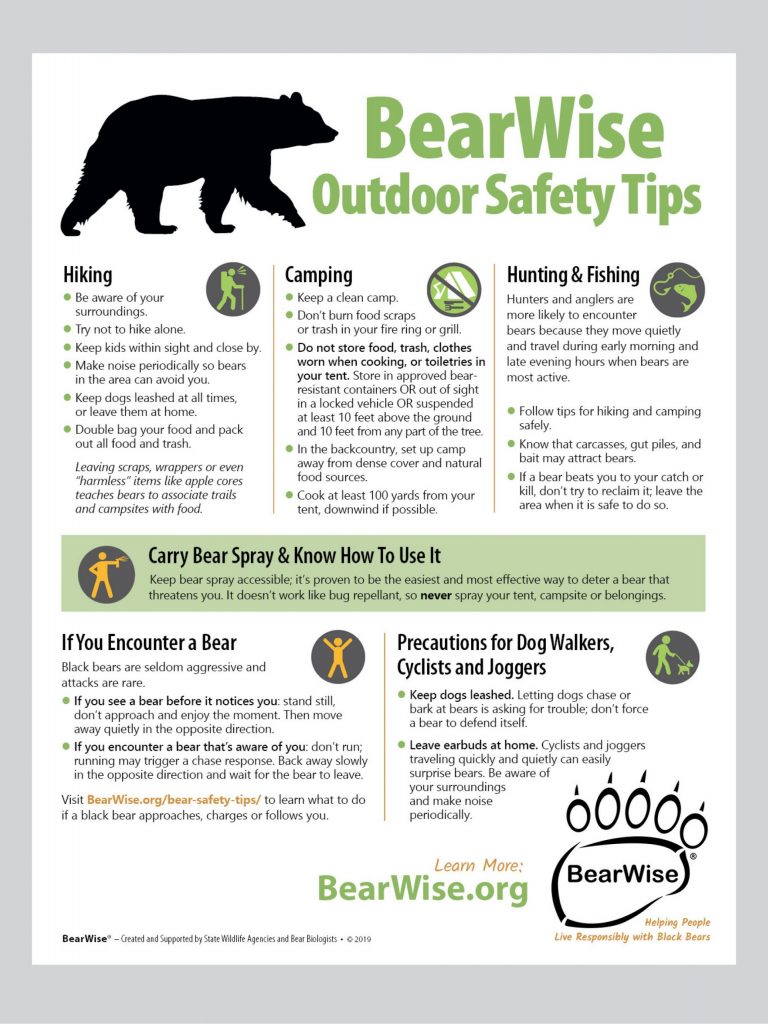
Campsite Safety
When enjoying the great outdoors, it’s important to be prepared and knowledgeable about bear safety precautions. Understanding how to minimize the risk of bear encounters can greatly enhance your camping experience. One crucial aspect of bear safety is ensuring a safe campsite. Here are some tips to help you select and set up a campsite that reduces the likelihood of attracting bears.
Selecting a Safe Campsite
When choosing a campsite, look for an area that is well-traveled and frequently used by campers. Bears are less likely to wander into sites that are regularly visited by humans. Avoid setting up camp near bear habitats such as berry patches or running water, as these may attract them.
Setting Up Proper Food Storage
Proper food storage is essential to deter bears from approaching your campground. Keep all food, trash, and scented items stored in bear-resistant containers. Hang the containers high in a tree, at least 10 feet off the ground and 4 feet away from the trunk. This will prevent bears from accessing your supplies, reducing the risk of a dangerous encounter.
Cooking and Eating Precautions
When cooking meals, choose a designated cooking area that is a safe distance from your sleeping area. Prepare food away from your tent to avoid attracting bears with food smells. Additionally, clean up thoroughly after meals, disposing of any leftover food scraps far from your campsite.
Remember, these precautions are designed to prioritize both your safety and the well-being of bears. By following these guidelines, you can enjoy a peaceful and worry-free camping trip in bear country.
Conclusion
In conclusion, taking responsibility for bear safety is essential to ensure a safe encounter with these powerful creatures. By following the recommended precautions, you can greatly reduce the risk of negative interactions and potential harm to both yourself and the bears.
Taking Responsibility for Bear Safety
You play a crucial role in bear safety by practicing proper food management, disposing of waste properly, and storing food securely. By keeping a clean campsite, you minimize the chances of attracting bears to your area. Additionally, using bear-resistant containers to store food and other scented items is a must when camping in bear country. Remember to always be aware of your surroundings and remain vigilant when exploring the wilderness.
Educating Others on Bear Precautions
Sharing your knowledge about bear safety precautions is just as important as practicing them yourself. Ensure that fellow campers, hikers, and outdoor enthusiasts are aware of the potential dangers and the necessary precautions to take. By educating others, you contribute to a safer environment for both humans and bears.
By taking these bear safety precautions seriously and spreading awareness, you can help promote coexistence with these magnificent animals while minimizing the chances of conflicts. Remember, your actions and knowledge can make a significant difference in preserving the beauty and wonder of bear country.




